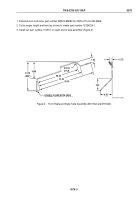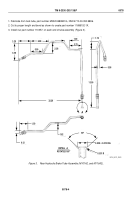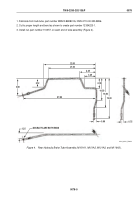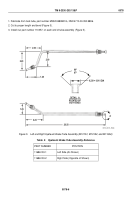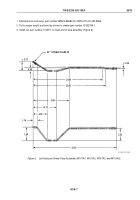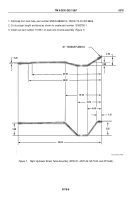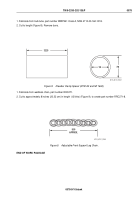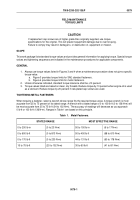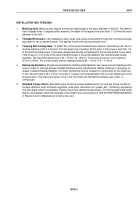TM-9-2330-202-13-P - Page 379 of 552
INSTALLATION AND TORQUING
1.
Matching Nuts.
Matching nuts require a minimum height equal to the basic diameter of the bolt. The same is
true of tapped holes. In tapped softer materials, the depth of the tapped hole should be 1-1/2 times the basic
diameter of the bolt.
2.
Threaded Protrusion.
In all installations, bolts, studs, and screws must extend through the nut at least a length
equivalent to two complete threads. This applies to both self-locking and plain nuts.
3.
Torquing Self-Locking Nuts.
To obtain the correct recommended torque value on self-locking nuts, the nut
must be tightened until it is one turn from the beginning of seating. At this point, if the torque is less than 1/3
of the recommended torque, it should be disregarded and the nut tightened to the recommended torque value.
If the torque is 1/3 or more of the recommended torque, it should be added to the recommended torque.
Example: The recommended torque is 50 – 70 lb-in (6 – 8 N•m). The torque at one turn from seating is
30 lb-in (3 N•m). The correct torque wrench reading would be 80 – 100 lb-in (9 – 11 N•m).
4.
Retorquing Fasteners.
Procedures intended for installing metal fasteners can cause incorrect readings when
used to check or retorque already installed fasteners during maintenance. Before checking or retorquing an
already installed threaded fastener, first mark the fastener and its companion components so the marks are
in line. Second, back it off a 1/4 turn to loosen it. Torque it to the specification with an even steady pull on the
torque wrench. The marks should be in line; if not, the marks will indicate the fastener was under- or
overtorqued.
5.
Standard Torque Charts.
Standard torque charts have been established for dry and wet torque conditions.
Surface variations such as thread roughness, scale paint, lubrication (oil, grease, etc.), hardening, and plating
may alter these values considerably. Figures 3 and 4 are standard torque charts. To find the grade of the screw
that is to be installed, match the markings on the head to the correct picture of CAP SCREW HEAD MARKINGS
in Figures 3 and 4. Manufacturer’s marks may vary.
TM 9-2330-202-13&P
0079
0079-3
Back to Top

